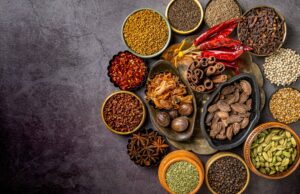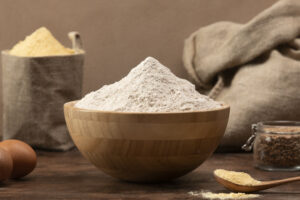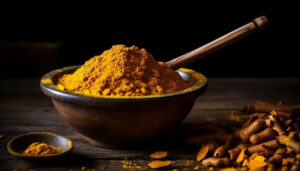Indian spices have a rich and fascinating history that dates back thousands of years. India has been known as the “Land of Spices” since ancient times and has been a major hub for the trade and cultivation of spices. The history of Indian spices is intertwined with the country’s cultural, economic, and even political development. Here is an overview of the history of Indian spices:
Ancient Era:
- As early as 3000 BCE, archaeological evidence suggests that spices like black pepper and turmeric were used in the Indus Valley Civilization, one of the world’s oldest urban civilizations.
- The spice trade flourished during ancient times, and spices from India, including black pepper, cardamom, cinnamon, and ginger, were highly valued by civilizations such as the Egyptians, Greeks, Romans, and Arab traders.
- The spice trade was a significant factor in establishing trade routes between India and other regions. The Silk Road, a network of trade routes connecting Asia with the Mediterranean, played a crucial role in exchanging spices, goods, and ideas.
Classical Period:
- During the classical period, India’s spice trade expanded further, and spices became even more sought after. Arab traders controlled much of the spice trade, bringing Indian spices to the Mediterranean region and beyond.
- Indian spices profoundly impacted the cuisine, flavors, and medicinal practices of various cultures and regions, including the Middle East and Europe. Black pepper, cinnamon, and ginger became staple ingredients in many cuisines.
- The demand for Indian spices remained high, leading to the exploration and discovery of sea routes to India by European powers like Portugal, Spain, the Netherlands, and England.
Colonial Era:
- The arrival of European colonial powers in India significantly impacted the spice trade. The Portuguese were the first to establish direct control over spice-producing regions in India, followed by the Dutch and the British.
- The British East India Company, in particular, played a crucial role in monopolizing and controlling the spice trade. They established plantations and introduced new agricultural practices for growing spices, including pepper, cardamom, cloves, and nutmeg.
- The British also introduced scientific methods for cultivating, processing, and quality control of spices, further enhancing India’s spice industry.
Modern Era:
- After India gained independence in 1947, the spice trade underwent significant changes. The country focused on modernizing its spice production and exporting high-quality spices to the global market.
- India emerged as one of the world’s largest producers and exporters of spices. Today, it is renowned for its various spices, including black pepper, cardamom, turmeric, cumin, coriander, cloves, cinnamon, and many others.
- Indian spices continue to play a vital role in Indian cuisine and international cuisines, adding unique flavors, aromas, and colors to dishes worldwide.
The history of Indian spices is a testament to these aromatic treasures’ cultural, economic, and culinary importance. They have shaped India’s identity and influenced global trade, cultural exchanges, and culinary practices for centuries.
Types of Indian Spices:

Indian cuisine is renowned for its vibrant and aromatic flavors, which are achieved through a wide variety of spices. Here are some of the most popular types of Indian spices:
- Turmeric (Haldi): Known for its bright yellow color, turmeric is widely used in Indian cooking. It has a warm, earthy flavor and is an essential spice in curry powders and a natural food coloring agent.
- Cumin (Jeera): Cumin seeds have a warm and slightly nutty flavor. They are often roasted and ground to enhance their aroma and used in curries, spice blends, and tempering oil for various dishes.
- Coriander (Dhania): Coriander seeds are commonly used in Indian cuisine. They have a citrusy and slightly sweet flavor. Ground coriander is an essential ingredient in curry powders, while coriander leaves (cilantro) are used as a garnish in many dishes.
- Cardamom (Elaichi): Cardamom pods contain aromatic seeds that have a sweet and floral flavor. They are used whole or ground in both sweet and savory dishes, such as curries, rice, desserts, and masala chai (spiced tea).
- Mustard Seeds (Rai/Sarson): Mustard seeds have a pungent and slightly bitter taste. They are commonly used for tempering oil in Indian cooking, adding a distinctive flavor to dishes. Mustard oil is also widely used in certain regional cuisines.
- Cloves (Laung): Cloves have a strong, sweet, and spicy flavor. They are used whole or ground in spice blends, rice dishes, curries, and desserts. Cloves are also known for their medicinal properties.
- Cinnamon (Dalchini): Cinnamon has a sweet and warm flavor. It is used in both sweet and savory dishes, including curries, biryanis, desserts, and beverages like masala chai.
- Fenugreek (Methi): Fenugreek seeds and leaves are commonly used in Indian cooking. The seeds taste bitter and are used in spice blends and pickles, while the leaves have a slightly sweet and nutty flavor and are used as a herb or in curries.
- Red Chili Powder (Lal Mirch): Red chili powder adds heat and spice to dishes. It is made from dried and ground red chili peppers and is a staple in Indian cuisine. The level of spiciness can vary depending on the type of chili used.
- Curry Leaves (Kadi Patta): Curry leaves have a distinct aroma and flavor. They are commonly used in South Indian cuisine and are added to curries, soups, rice dishes, and chutneys for their unique taste.
These are just a few examples of various spices used in Indian cooking. Each spice adds its distinct flavor and aroma, contributing to the complexity and depth of Indian cuisine.
Forms of Indian Spices:

Indian cuisine is renowned for its rich and diverse use of spices, which play a vital role in creating the distinctive flavors and aromas of Indian dishes. Here are some popular forms of Indian spices:
- Whole Spices: These are spices used in their whole form and often added to hot oil or ghee to release their flavors. Common examples include:
-
- Cumin seeds
- Mustard seeds
- Fenugreek seeds
- Coriander seeds
- Fennel seeds
- Cardamom pods
- Cloves
- Cinnamon sticks
- Bay leaves
- Ground Spices: These spices are dried and ground into a powder. Ground spices are used in various spice blends and curry powders or added individually to dishes. Some popular ground spices in Indian cuisine include:
- Turmeric powder
- Chili powder
- Cumin powder
- Coriander powder
- Garam masala (a blend of ground spices)
- Kashmiri red chili powder (known for its vibrant red color)
- Spice Blends : are mixtures of ground spices commonly used in Indian cooking. Spice blends are often region-specific and can vary in composition and heat level. Some well-known spice blends include:
- Tandoori masala
- Curry powder
- Biryani masala
- Rasam powder
- Sambar powder
- Panch phoron (a Bengali spice blend)
- Fresh Spices and Herbs: Fresh spices and herbs are widely used in Indian cuisine to enhance the flavors of dishes. These include:
- Ginger
- Garlic
- Green chilies
- Fresh coriander leaves (cilantro)
- Mint leaves
- Curry leaves
- Spice Pastes: These are made by grinding together fresh spices and herbs to form a paste. Spice pastes are commonly used as a base for curries and marinades. Examples include:
- Ginger-Garlic Paste
- Onion-Tomato Paste
- Red Chili Paste
These are just a few examples of the many spices used in Indian cuisine. The combination and proportions of spices can vary greatly depending on the dish or regional culinary traditions.
How to Use Indian Spices:
Using Indian spices can greatly enhance the flavor and aroma of your dishes. Here are some general tips on how to use Indian spices effectively:
- Whole Spices: Whole spices are often used for tempering or infusing flavors into dishes. Here’s how to use them:
- Heat oil or ghee in a pan and add spices like cumin seeds, mustard seeds, cardamom pods, cinnamon sticks, or cloves.
- Let the spices sizzle and release their aromas for a few seconds or until they become fragrant.
- Add other ingredients, such as onions, garlic, or ginger, to the pan and continue with your recipe.
- Ground Spices: Ground spices are versatile and can be added directly to dishes. Here’s how to use them:
- Measure the required amount of ground spice according to your recipe.
- If possible, toast the ground spices in a dry pan for a brief moment to awaken their flavors.
- Add the ground spices to the dish, stirring well to distribute the flavors evenly.
- Adjust the quantity of spices according to your taste preferences.
- Spice Blends: Indian spice blends like curry powder or garam masala add complexity to dishes. Here’s how to use them:
- Follow the recipe’s instructions for the specific spice blend, or make your blend by combining ground spices in the recommended ratios.
- Add the spice blend during cooking, allowing it to cook with other ingredients to develop flavors.
- Adjust the amount of spice blend to achieve the desired taste and spiciness level.
- Fresh Spices: Spices like ginger, garlic, and green chilies provide vibrant flavors. Here’s how to use them:
- Peel and mince or finely chop fresh spices like ginger or garlic.
- Add them to the dish during the cooking process, usually at the beginning, to infuse their flavors.
- Green chilies can be sliced, chopped, or used whole, depending on the desired level of spiciness.
- Dried Spices: Dried spices are often added for their distinct flavors. Here’s how to use them:
- Dried red chilies can be crushed or added whole to dishes to provide heat and flavor.
- Dried fenugreek leaves (Kasuri methi) can be crumbled and added to curries, sauces, or marinades.
- Dried curry leaves can be used whole or crushed for tempering or added to curries and rice dishes for their aromatic flavor.
Remember to start with small quantities of spices, taste as you go, and adjust according to your preference. Each spice has its unique flavor profile, so feel free to experiment and explore different combinations to create delicious Indian-inspired dishes.
Where to Buy:
Indian spices can be purchased from various sources in physical stores and online. Here are some common places where you can buy Indian spices:
- Local Grocery Stores: Many local grocery stores, especially those with an international or ethnic food section, carry a range of Indian spices. Look for stores specializing in Asian, Indian, or international products, as they are more likely to have a wide selection of Indian spices.
- Indian Grocery Stores: Indian grocery stores are dedicated to offering a comprehensive range of Indian ingredients, including spices. These stores often stock a wide variety of whole and ground spices and may even carry specific regional spices and spice blends.
- Farmers Markets: Some farmers’ markets have vendors selling a variety of spices, including Indian spices. This can be a great way to access locally sourced, organic, or artisanal spices.
- Online Retailers: Numerous online retailers specialize in selling Indian groceries and spices. Websites like Amazon, Walmart and ethnic food marketplaces like Patel Brothers and Spices of India offer various Indian spices, spice blends, and condiments. Ensure that you purchase from reputable sellers with good customer reviews.
- Spice Specialty Stores: Specialty spice shops or gourmet stores often stock a diverse selection of high-quality spices, including Indian spices. These stores may offer unique or hard-to-find spices, ensuring freshness and superior flavor.
- Co-ops and Health Food Stores: Some cooperative grocery stores or health food stores have sections dedicated to international ingredients. These stores often carry a range of spices, including organic and fair-trade options.
- Bulk Stores: Bulk stores, such as Costco or Sam’s Club, may have a limited selection of Indian spices available in larger quantities, suitable for those who frequently use or need them in bulk.
When purchasing Indian spices, consider factors such as quality, freshness, and any specific requirements you may have, such as organic or ethically sourced options. Exploring a mix of local stores and online options can be beneficial to find the widest variety and the best deals.
Common Spices:
Indian cuisine is known for its vibrant and aromatic flavors, achieved through various spices. Here are some of the most common Indian spices used in various dishes:
- Turmeric (Haldi): Turmeric is a bright yellow spice known for its earthy flavor. It is used in almost all Indian dishes and is a key ingredient in curry powders. Turmeric also adds vibrant color to dishes.
- Cumin (Jeera): Cumin seeds have a warm and slightly nutty flavor. They are commonly used in tempering, spice blends, and curries. Ground cumin is also used as a seasoning in many Indian recipes.
- Coriander (Dhania): Coriander seeds have a citrusy and slightly sweet flavor. They are used whole or ground in curries, spice blends, pickles, and chutneys. Coriander leaves (cilantro) are garnished in many Indian dishes.
- Cardamom (Elaichi): Cardamom pods contain aromatic seeds with a sweet and floral flavor. They are used whole or ground in sweet and savory dishes, including curries, rice dishes, and desserts.
- Mustard Seeds (Rai/Sarson): Mustard seeds have a pungent and slightly bitter taste. They temper oil in many Indian recipes, providing a distinctive flavor. Mustard oil is also used in certain regional cuisines.
- Cloves (Laung): Cloves have a strong, sweet, and spicy flavor. They are used whole or ground in spice blends, rice dishes, curries, and desserts. Cloves are also known for their medicinal properties.
- Cinnamon (Dalchini): Cinnamon has a sweet and warm flavor. It is used in sweet and savory dishes, such as curries, biryanis, desserts, and beverages like masala chai (spiced tea).
- Fenugreek (Methi): Fenugreek seeds and leaves are commonly used in Indian cooking. The seeds taste bitter and are used in spice blends and pickles, while the leaves have a slightly sweet and nutty flavor and are used as a herb or in curries.
- Red Chili Powder (Lal Mirch): Red chili powder adds heat and spice to dishes. It is made from dried and ground red chili peppers and is a staple in Indian cuisine. The level of spiciness can vary depending on the type of chili used.
- Garam Masala: Garam masala is a spice blend commonly used in Indian cooking. It typically includes a combination of cinnamon, cardamom, cloves, cumin, coriander, black pepper, and other spices. Garam masala adds warmth and complexity to dishes.
These are just a few examples of the common spices used in Indian cuisine. The combinations and proportions of these spices can vary depending on the region and the specific dish being prepared.
Health Benefits of Indian Spices:
Indian spices enhance the flavors and aromas of dishes and offer several health benefits. Here are some of the health benefits associated with commonly used Indian spices:
- Turmeric: Turmeric contains a compound called curcumin, which has potent anti-inflammatory and antioxidant properties. It may help reduce inflammation, support joint health, improve digestion, and potentially lower the risk of chronic diseases such as heart disease, cancer, and Alzheimer’s.
- Cumin: Has traditionally been used in Ayurvedic medicine for its digestive properties. It may aid digestion, reduce bloating, and relieve indigestion. Cumin also contains antioxidants and may have anti-cancer properties.
- Coriander: Coriander is rich in antioxidants and has been used for its anti-inflammatory properties. It may help improve digestion, lower cholesterol levels, and promote heart health. Coriander seeds also have antimicrobial properties that may help combat foodborne illnesses.
- Cardamom: Cardamom is known for its aromatic flavor and has been used in traditional medicine for digestive issues. It may help alleviate symptoms of indigestion, reduce bloating, and improve overall gut health. Cardamom also has antioxidant properties and may have antimicrobial effects.
- Cinnamon: Cinnamon has been studied for its potential to help regulate blood sugar levels by improving insulin sensitivity. It may also help lower cholesterol levels, reduce inflammation, and have antimicrobial properties. Additionally, cinnamon is rich in antioxidants.
- Ginger: Ginger is well-known for its ability to alleviate nausea and aid digestion. It may help reduce inflammation, relieve muscle pain and soreness, and improve symptoms of osteoarthritis. Ginger also has antimicrobial properties and may support immune health.
- Fenugreek: Fenugreek seeds are often used to support digestion and alleviate symptoms of indigestion. They may also help regulate blood sugar levels, improve insulin sensitivity, and reduce cholesterol levels. Fenugreek has anti-inflammatory properties and may support breastfeeding and enhance milk production.
- Cloves: Cloves are packed with antioxidants and have been used in traditional medicine for their analgesic and antibacterial properties. They may help alleviate toothaches, support oral health, reduce inflammation, and have potential cancer-fighting properties.
- Mustard Seeds: Mustard seeds contain compounds that may have anti-inflammatory and antimicrobial effects. They may help improve digestion, stimulate appetite, and aid in detoxification. Mustard seeds are also rich in antioxidants.
- Chili Peppers: Chili peppers contain capsaicin, a compound known for its potential to boost metabolism, reduce appetite, and promote weight loss. They may also have pain-relieving properties, support heart health, and have antimicrobial effects.
It’s important to note that while spices offer potential health benefits, they are not meant to replace medical treatment or serve as the sole solution for health conditions. Incorporating a variety of spices into a balanced and nutritious diet and a healthy lifestyle can contribute to overall well-being.
Here is a list of various Indian spices commonly used in Indian cuisine:
- Turmeric (Haldi)
- Cumin (Jeera)
- Coriander (Dhania)
- Cardamom (Elaichi)
- Mustard Seeds (Rai/Sarson)
- Fenugreek (Methi)
- Cloves (Laung)
- Cinnamon (Dalchini)
- Red Chili Powder (Lal Mirch)
- Garam Masala
- Fennel Seeds (Saunf)
- Asafoetida (Hing)
- Bay Leaf (Tej Patta)
- Nutmeg (Jaiphal)
- Mace (Javitri)
- Star Anise (Chakra Phool)
- Black Pepper (Kali Mirch)
- Green Cardamom (Choti Elaichi)
- Black Cardamom (Badi Elaichi)
- Curry Leaves (Kadi Patta)
- Poppy Seeds (Khus Khus)
- Saffron (Kesar)
- Anise Seeds (Sauf)
- Ajwain (Carom Seeds)
- Tamarind (Imli)
- Amchur (Dried Mango Powder)
- Paprika (Kashmiri Red Chili Powder)
- Jaggery (Gur)
- Dried Fenugreek Leaves (Kasuri Methi)
- Nigella Seeds (Kalonji)
- Pomegranate Seeds (Anardana)
- Turmeric Leaves (Haldi ke Patte)
- Ajwain Seeds (Bishop’s Weed)
- Dill Seeds (Suva Seeds)
- Celery Seeds (Ajmoda)
- Sichuan Pepper (Timmur/Kaali Mirch)
- Long Pepper (Pippali)
- Mango Powder (Amchoor)
- Cumin Powder (Jeera Powder)
- Coriander Powder (Dhania Powder)
Please note that this list is not exhaustive, and many more spices and spice blends are used in Indian cuisine. The names mentioned here are some of the commonly used ones.
Disclaimer:
The opinions expressed within this article are the personal opinions of the author. WINDHU KITCHEN is not responsible for the accuracy, completeness, suitability, or validity of any information in this article. All information is provided on an as-is basis. The information, facts, or opinions appearing in the article do not reflect the views of WINDHU KITCHEN does not assume any responsibility or liability for the same.



